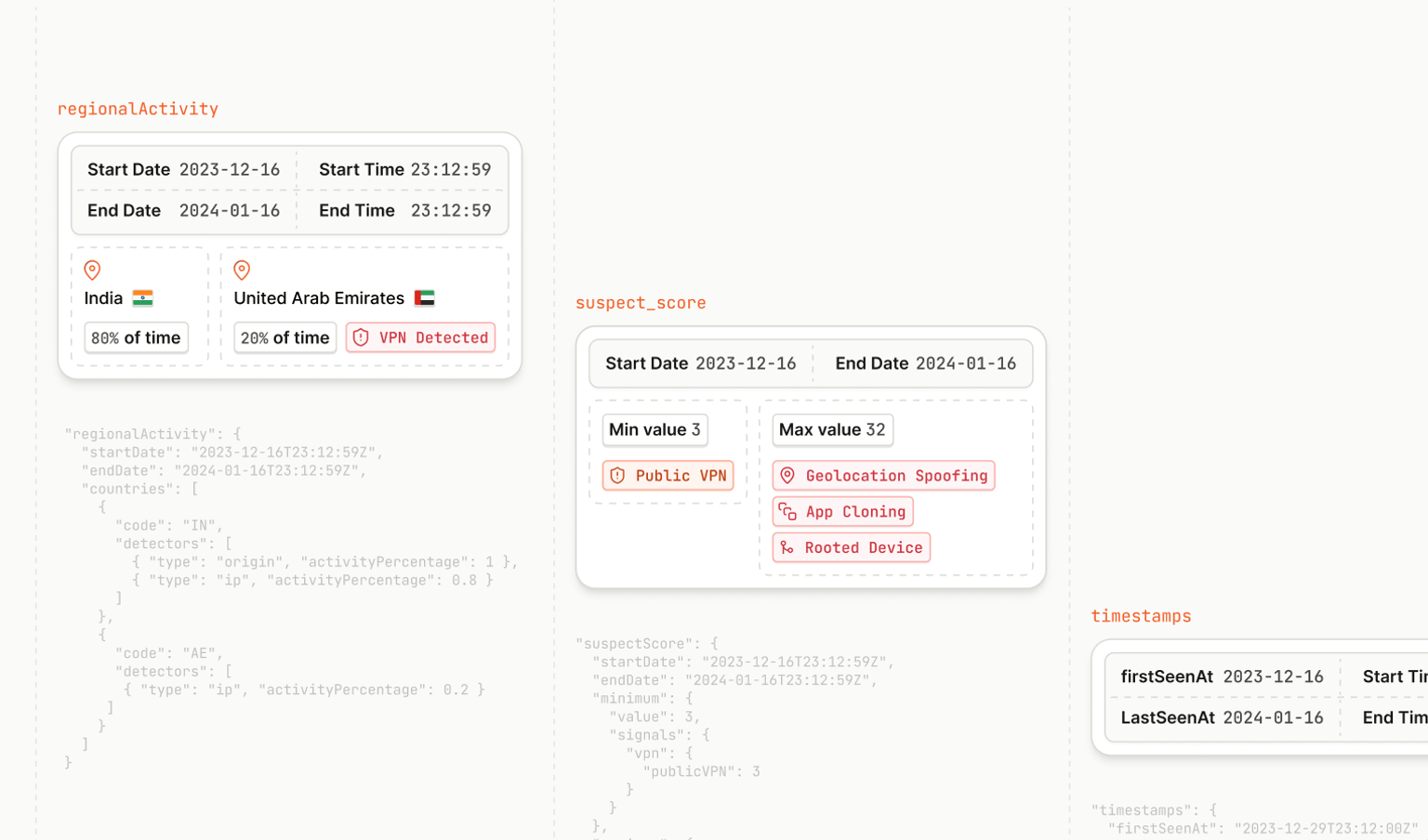
Our initial release of Smart Signals featured the first collection of signals that Fingerprint gathers to provide deeper insight into anonymous visitors. It also marked the beginning of our journey to provide more signals and better data intelligence to our customers to help them make better, more informed decisions.
We've added six additional Smart Signals to increase our capabilities around mobile identification, user behavior, and bot detection.
Mobile Smart Signals
Fingerprint’s device intelligence goes beyond desktop and mobile web identification and into both iOS and Android applications as well. (To read more about our SDKs, click here.)
On both operating systems, we identified a select number of signals that are highly indicative of fraudulent activity within mobile applications, which provide specific information about a device and the installed applications.
Cloned app detection (Android only)
Cloned app detection identifies if a request comes from an application cloned on the device by special software. Cloned apps look and behave in the same way as the original ones. Typically they are used for creating multiple accounts on the same device, which is widely used for abusing loyalty programs and redeeming promotional or bonus coupons numerous times.
Factory reset detection (iOS and Android)
Factory reset detection indicates when a device was reset to its factory settings, which results in wiping all user-sensitive data. Fraudsters often reset a device after performing fraudulent actions to cover their tracks. Multiple device resets are typically a strong indicator that someone has been attempting to commit some type of fraud. This signal, in particular, is a strong identifier as it's doubtful that two separate phones will be factory reset simultaneously.
Jailbroken device detection (iOS only)
Jailbroken device detection identifies if a visitor is using a jailbroken iPhone. While not all users of a jailbroken iPhone are inherently up to no good, it does increase the risk of fraud for that user. Jailbroken iPhones are easy targets for malware attacks, and they can lead to system crashes or much worse. Additionally, hackers have been known to prey on jailbroken iPhones with click-fraud schemes, similar to Apple ID phishing scams.
Frida detection (iOS and Android)
Frida detection indicates if the open-source tool Frida has been used to tamper with the app. Frida allows users to not only inspect but inject snippets of JavaScript into native apps on iOS. The use of Frida can often indicate a user intending to access information the app developer has intentionally made unavailable.
User behavior Smart Signals
Privacy-focused settings
Privacy-focused browser indicates if a request is initiated from a privacy-focused browser (e.g., Tor) or a browser with an anti-fingerprinting setting. This signal helps identify specific users going to extraordinary lengths to obfuscate their identity, similar to incognito mode.
Bot detection Smart Signals
Virtual machine detection
Virtual machine detection identifies if a request comes from a virtual machine, which can mean the request comes from an automated source of traffic or an individual who uses a virtual machine for browsing. Virtual machines, or emulators, are often used to run legacy content or programs but can be used in fraud schemes as well. Virtual machines aim to make a system look exactly like it’s something else, another personal computer (PC) or even a mobile device. They can switch device IDs quickly, making them appear as another user which can bypass a lot of generic device fingerprinting methods.
The new mobile Smart Signals bolster device intelligence capabilities within the mobile application space by allowing Fingerprint users to add more tools to their toolkit when it comes to fraud on mobile devices and applications, where fraudsters are continuously optimizing and expanding their means of fraudulent behavior.
All Smart Signals listed above are available with Fingerprint Pro Plus plans and above, To learn more, check out our Smart Signals webpage here.



